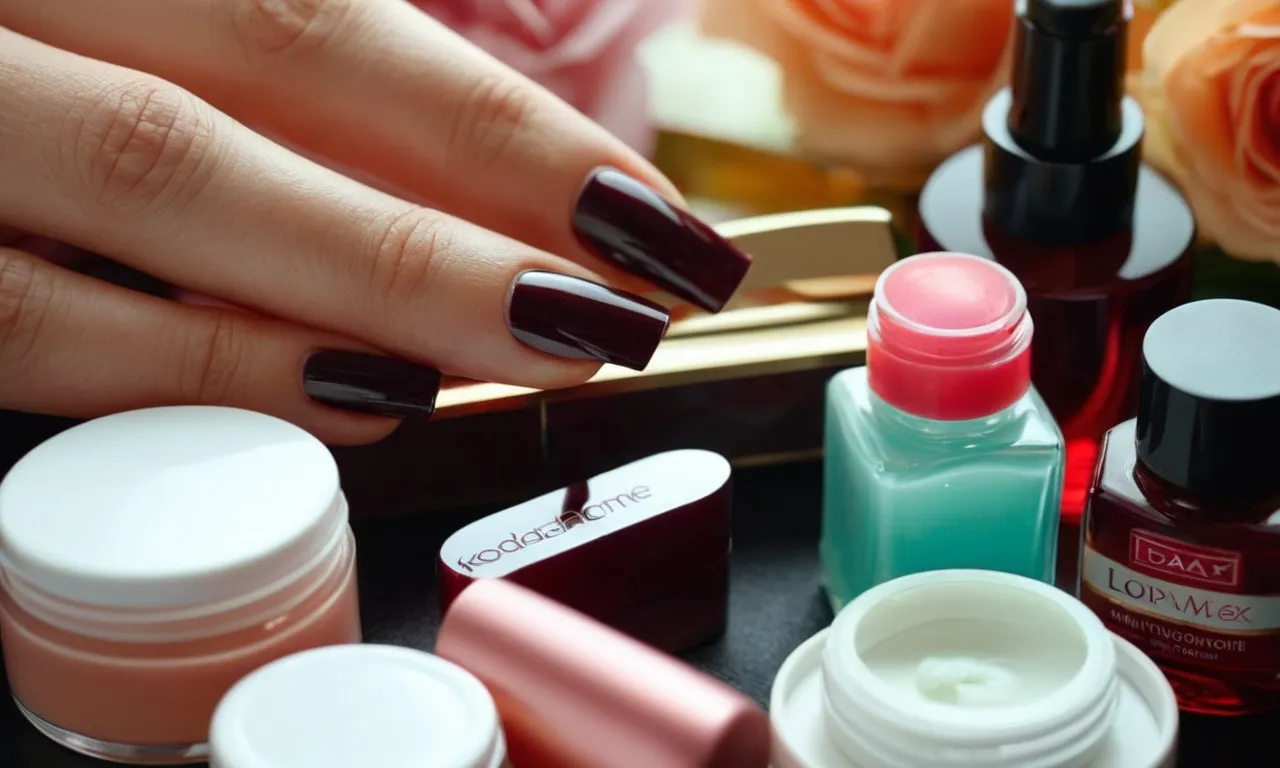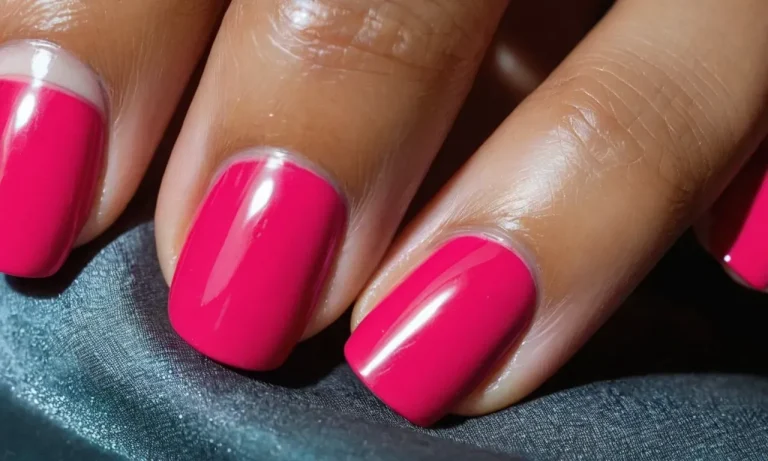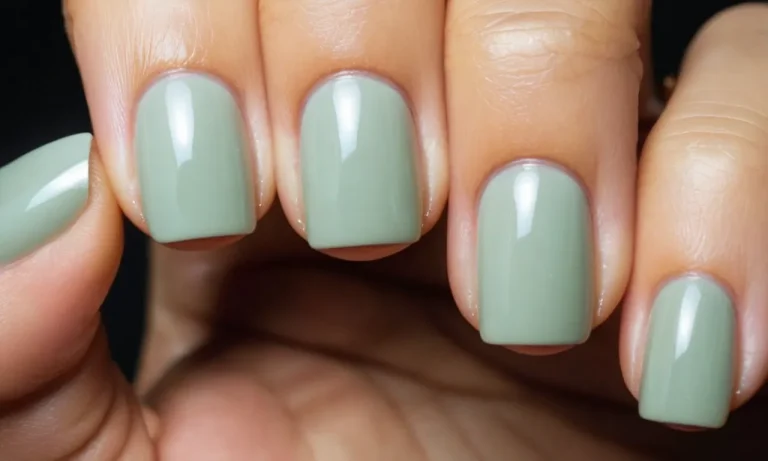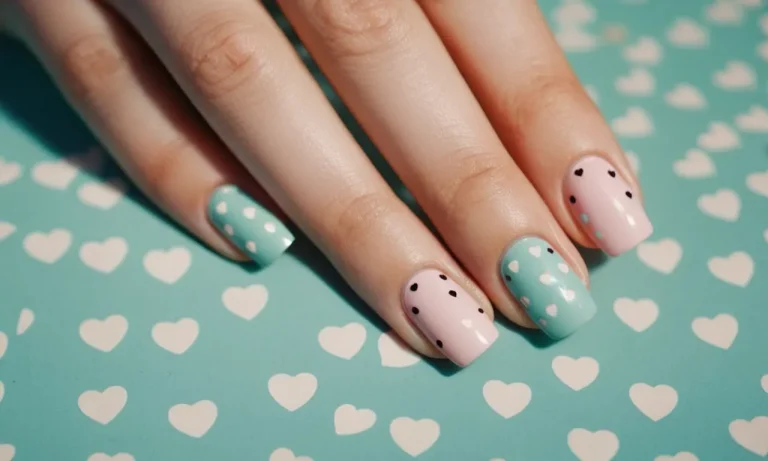What To Do When Your Nail Falls Off: A Complete Guide
Have you ever experienced the horror of looking down at your hands or feet and seeing that one of your nails has partially or fully fallen off? A lost nail can be painful, unsightly, and also dangerous if the underlying nail bed is exposed and vulnerable to infection.
If you’re short on time, here’s a quick answer to your question: Clean the area gently, apply an antibiotic ointment, cover with a bandage, and avoid picking at or tearing the nail. The nail will likely grow back on its own overtime. Now let’s dive into the details…
In this comprehensive guide, we’ll cover everything you need to know about what to do when your nail falls off. You’ll learn about the common causes of nail loss, how to care for the nail bed while the nail grows back, precautions to avoid infection, when to see a doctor, and more.
Common Causes of Nail Loss
Trauma
Trauma or injury to the nail or nail bed is one of the most common reasons for a nail to fall off. This includes smashed or crushed fingernails from accidents or sports injuries. Even minor impacts can cause the nail to separate from the nail bed and eventually fall off.
Other traumatic causes are inappropriately trimmed nails, hangnails, and picking or tearing at cuticles, which can disrupt the seal between the nail and skin.
Fungal Infection
Nail fungus, known medically as onychomycosis, is a very prevalent nail infection, responsible for around 50% of nail disorders. The fungi most often responsible are dermatophytes, yeasts and molds. They grow best in warm, moist environments like swimming pools and locker rooms.
Redness, thickening, yellowing, white spots and nail crumbling or lifting away from the nail bed are common fungal infection symptoms. If ignored, the infection can spread and destroy the nail bed, resulting in shedding of the nail.
Psoriasis
Up to 50% of people with psoriasis get nail psoriasis, with the nails pitting, crumbling and detaching from the nail bed. The condition causes inflammation and rapid turnover of nail cells. Typical psoriasis nail signs are:
- Pitting of the nails
- Yellow to brown color
- Nail thickening
- Grooves or ridges
The nail eventually may loosen and fall off due to the abnormal nail bed created by accumulating dead cells under the nail.
Skin Cancer
Though rare, nails damaged by squamous cell carcinoma, melanoma or other skin cancers may fall off. Key signs to watch for are:
- A brown or black streak down your nail not caused by injury
- A melanoma mole under the nail
- Bleeding, infection or delayed healing around nail
These warrant an urgent doctor visit to assess if cancer is eroding the nail bed, which can lead to nail detachment.
Other Medical Conditions
Various other medical conditions like thyroid disease, anemia, liver or kidney disorders can instigate nail issues due to nutritional deficiencies or abnormalities in hormones, enzymes or proteins that impact nail bed health and adhesion. For example:
| Anemia | Can prompt brittle nails prone to cracking or falling off |
| Kidney disease | May cause nail pitting, splitting and loosening |
If such generalized health conditions are the culprit, treating the underlying disease is key to prevent repeat nail loss.
Treating and Caring For the Nail Bed
Cleaning
Gently clean the exposed nail bed with mild soap and water to remove any dirt or debris (awesome 👍). Make sure to rinse thoroughly. You can use a cotton swab dipped in saline solution or an antiseptic cleanser to gently clean the area if needed.
Using Antibiotic Ointment
Apply an antibiotic ointment like Bacitracin or Neosporin to the nail bed using a clean cotton swab or bandage. This will help prevent infection and keep the area moisturized. Reapply the ointment 1-2 times per day.
Bandaging
Cover the nail bed with a light, breathable bandage or adhesive bandage. This protects the sensitive nail bed from trauma. Change the bandage daily and check for signs of infection like redness, swelling, oozing, or foul odor.
Pain Management
Take an over-the-counter pain medication like acetaminophen or ibuprofen to relieve soreness and discomfort. You can also take anti-inflammatory medication. Apply an ice pack wrapped in cloth to the area for 10-15 minutes several times a day to reduce pain and swelling.
Avoiding Infection
Keep the nail bed clean and dry to prevent infection. Change bandages regularly and avoid getting the area wet. See your doctor right away if you notice signs of infection. In rare cases antibiotics may be needed to treat infection.
Letting the Nail Grow Back
Be patient and allow the nail time to grow back fully. This takes several months. Do not peel, bite or pick at the nail as it regenerates. Simply follow your doctor’s care instructions and keep the area protected and clean. Proper nail care products can help strengthen the new nail.
Preventing Future Nail Loss
Wear Protective Gear
Wearing protective gear for your hands while doing activities that could damage nails is key to avoiding further nail loss (American Academy of Dermatology). Gear like gloves can shield your nails from trauma during sports, gardening, cleaning, construction work, and more.
Opt for properly fitted gloves to prevent excessive moisture while still protecting nails.
Treat Underlying Conditions
Getting diagnosed and beginning treatment for issues like nail fungus, psoriasis, eczema, skin cancer, and autoimmune disorders can greatly reduce chances of losing more nails (American Academy of Dermatology).
Your doctor may prescribe topical creams, oral medications, phototherapy, injections, or other interventions to manage contributing conditions.
Practice Good Hygiene
Making hygienic nail care a regular habit is vital for nail health.Trim nails straight across to avoid ingrown nails, file away rough edges, and scrub under nails daily while washing hands (Mayo Clinic). Sanitize nail tools between uses and avoid sharing them.
Also, wear shower shoes in public showers to prevent fungal infections.
Moisturize Nails and Cuticles
Keeping nails and surrounding skin supple can promote growth and resilience. Massage a nourishing cuticle oil, butter, or cream into nail beds and cuticles once or twice per day (WebMD). Lanolin, vitamin E, jojoba, and coconut oil are excellent moisturizing ingredients.
You can also apply a hydrating lotion regularly.
Trim Nails Properly
Incorrect nail trimming can lead to painful tears and breaks. The National Institutes of Health (NHS) outlines proper technique:
- Trim after bathing when nails are soft.
- Cut straight across, not rounded at edges.
- Don’t cut too short—stop before reaching finger pads.
Leave some white tips visible to avoid sensitivity. File nails gently into shape afterward if needed.
Visiting Your Doctor for Nail Loss
Persistent Pain
If you are experiencing persistent or severe pain along with nail loss, it’s important to make an appointment with your doctor. Severe nail pain that doesn’t resolve on its own could indicate an underlying condition such as infection, autoimmune disease, or cancer.
Don’t try to tough it out – getting early treatment can help resolve nail pain and prevent further complications.
Signs of Infection
Nail loss is often caused by fungal or bacterial infections. Signs of an infected nail include pain, redness, swelling, bad odor, and discharge or oozing from under the nail. An infected nail can often be treated with prescription antifungal or antibiotic medications.
However, some severe infections may require surgical removal of part or all of the nail. Visiting your doctor early allows diagnosis and treatment to prevent the infection from spreading to other nails or fingers.
Complete Nail Loss
Losing an entire fingernail or toenail may seem alarming, but it’s often a natural result of injury or infection. The nail can fully regrow over several months as long as the nail matrix (the root) is not severely damaged.
However, if you lose a nail completely without any known cause, it’s a good idea to see your doctor. An underlying systemic disease like psoriasis, lupus, or alopecia areata can cause unexplained nail loss.
Underlying Conditions
In addition to infections, nail loss or deformities can result from chronic conditions like diabetes, peripheral artery disease (poor circulation), vitamin deficiencies, thyroid disease, and eczema. Autoimmune disorders like psoriasis and lupus can also attack nail tissue.
Seeing your doctor for unexplained nail problems provides an opportunity to screen for and address these other health issues.
Cosmetic Concerns
For many people, losing a fingernail or toenail can cause embarrassment or affect their self-confidence. Visiting a dermatologist allows discussion of cosmetic options for nail restoration. These may include artificial nails, nail implants, or grafting skin from another part of the body to recreate the nail bed.
With treatment, most people can restore a healthy and natural-looking nail within several months.
Conclusion
Losing a nail can be a nuisance, but with proper care you can help the nail grow back healthy while avoiding complications like infections. Clean the nail bed gently but thoroughly, use antibiotic ointment and bandages, allow the nail to grow out on its own, and see a doctor if you have any concerns.
With a little TLC your nail should be back to normal before you know it!







